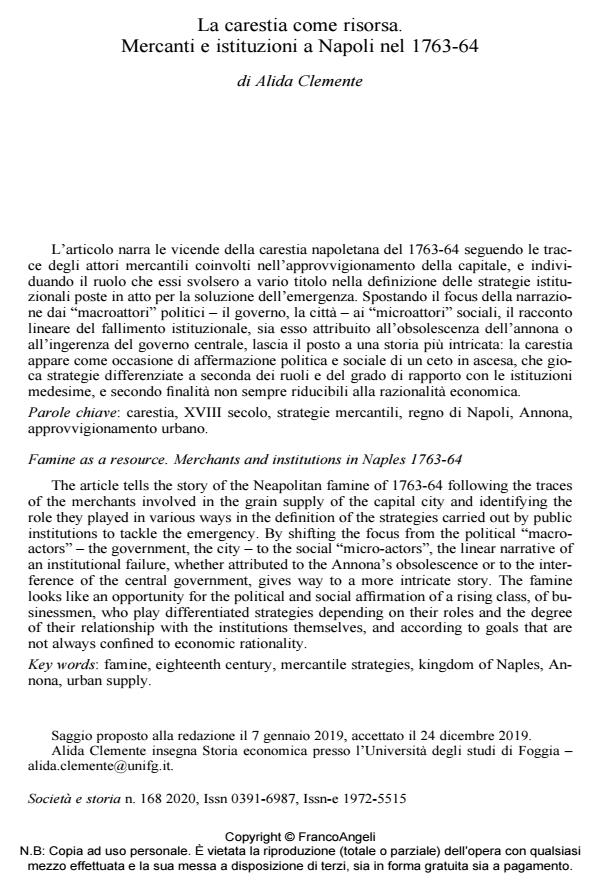Famine as a resource. Merchants and institutions in Naples 1763-64
Journal title SOCIETÀ E STORIA
Author/s Alida Clemente
Publishing Year 2020 Issue 2020/168
Language Italian Pages 32 P. 257-288 File size 126 KB
DOI 10.3280/SS2020-168003
DOI is like a bar code for intellectual property: to have more infomation
click here
Below, you can see the article first page
If you want to buy this article in PDF format, you can do it, following the instructions to buy download credits

FrancoAngeli is member of Publishers International Linking Association, Inc (PILA), a not-for-profit association which run the CrossRef service enabling links to and from online scholarly content.
The article tells the story of the Neapolitan famine of 1763-64 following the traces of the merchants involved in the grain supply of the capital city and identifying the role they played in various ways in the definition of the strategies carried out by public institutions to tackle the emergency. By shifting the focus from the political "macroactors" - the government, the city -to the social "micro-actors", the linear narrative of an institutional failure, whether attributed to the Annona’s obsolescence or to the interference of the central government, gives way to a more intricate story. The famine looks like an opportunity for the political and social affirmation of a rising class, of businessmen, who play differentiated strategies depending on their roles and the degree of their relationship with the institutions themselves, and according to goals that are not always confined to economic rationality.
Keywords: Famine, eighteenth century, mercantile strategies, kingdom of Naples, Annona, urban supply
- Quale storia della società? Uno sguardo sull'epoca moderna Paola Bianchi, in SOCIETÀ E STORIA 178/2023 pp.711
DOI: 10.3280/SS2022-178005 - Practices, merchants and mercantilisms. Jews and the cereal trade in Trieste between Eastern Europe, the Po and the Mediterranean (18th century) Daniele Andreozzi, in Business History /2024 pp.672
DOI: 10.1080/00076791.2021.1932816
Alida Clemente, La carestia come risorsa. Mercanti e istituzioni a Napoli nel 1763-64 in "SOCIETÀ E STORIA " 168/2020, pp 257-288, DOI: 10.3280/SS2020-168003